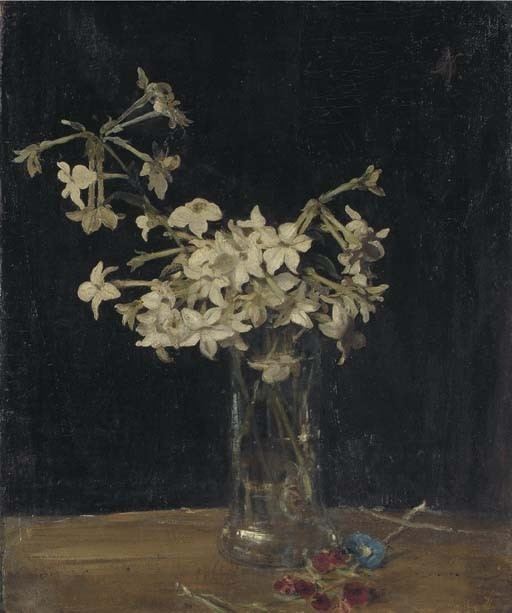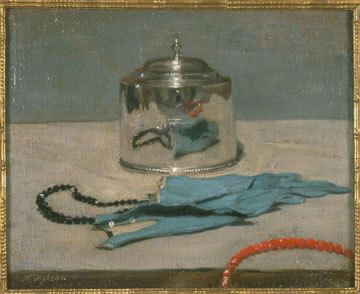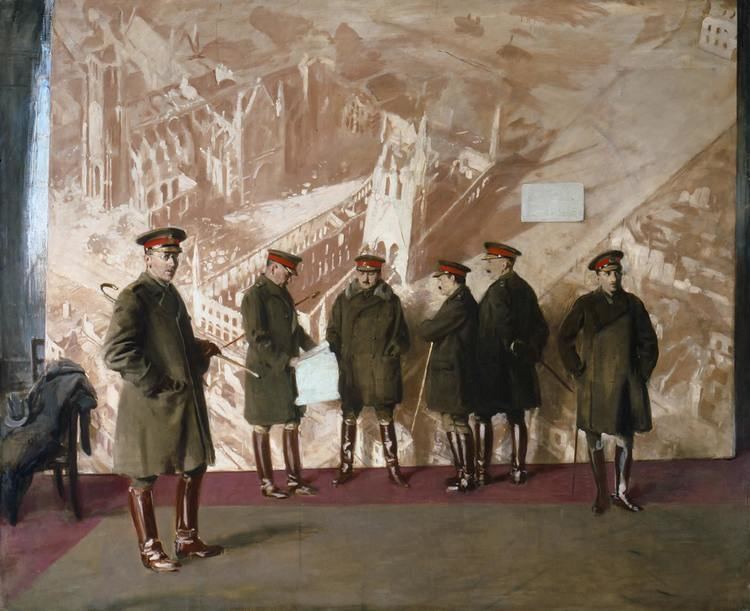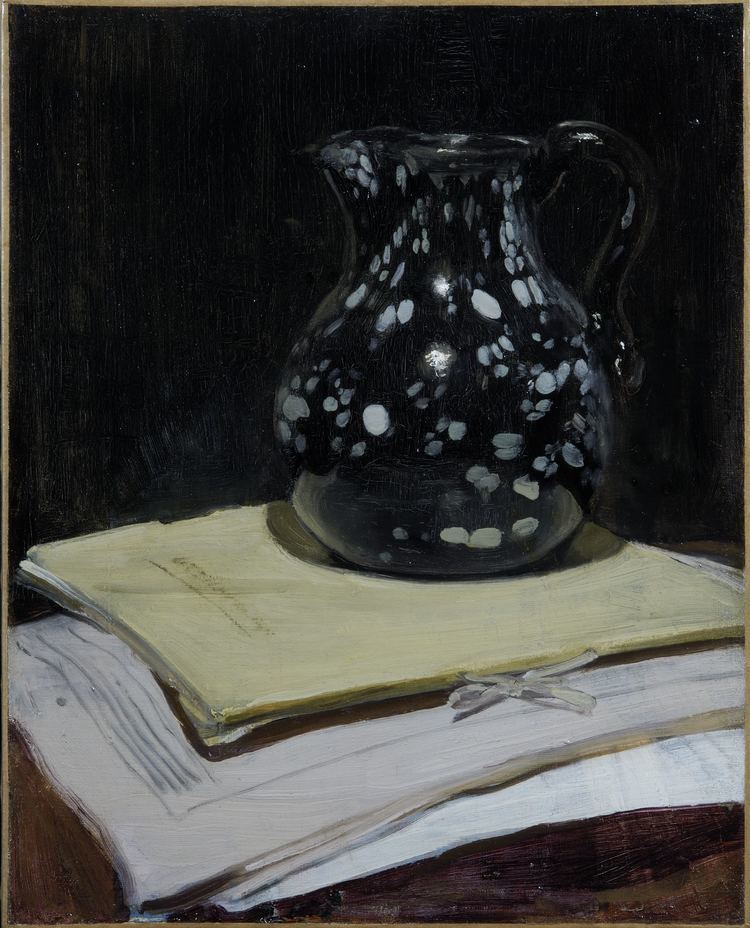Nationality English Name William Nicholson Education Academie Julian | Movement none Role Author | |
Full Name William Newzam Prior Nicholson Spouse(s) Mabel PrydeEdith Stuart-Wortley Artwork A Glade near Midhurst, Cliffs at Rottingdean Children Ben Nicholson, Nancy Nicholson Similar People | ||
Sir William Newzam Prior Nicholson (5 February 1872 – 16 May 1949) was an English painter of still-life, landscape and portraits, also known for his work as a wood-engraver, illustrator, author of children's books and designer for the theatre.
Contents
- Life
- Graphic work
- Book design and illustration
- Paintings
- Work in other fields
- Reception
- As author and illustrator
- As illustrator
- Exhibitions
- References

Life

William Nicholson was born in Newark-on-Trent on 5 February 1872, the youngest son of William Newzam Nicholson, an industrialist and Conservative MP of Newark, and his wife Annie Elizabeth Prior, the daughter of Joseph Prior and Elizabeth (nee Mallam) of Woodstock, Oxon. From the age of 9 he attended Magnus Grammar School, first as a weekly boarder, later as a day-boy. He had art lessons from the painter, politician and art-master William Cubley of Newark-on-Trent, who had been a pupil of Sir William Beechey, who had been a pupil of Sir Joshua Reynolds. He was briefly a student at Hubert von Herkomer's art school, where he met his future wife Mabel Pryde (1871–1918), who introduced him to her brother James Pryde (1866–1941). From the autumn of 1891 he attended the Academie Julian in Paris, but after six months returned to Newark.

In the spring of 1893 Nicholson eloped with Mabel Pryde, whom he had by then known for four years; they were married in Ruislip on 25 April. The couple went to live in what had been a pub, the Eight Bells at Denham, Bucks. They were soon joined by Mabel's brother James, and not long after by Ellen Terry's son Edward Gordon Craig and his wife May, who had also recently eloped and married. Nicholson received an annual allowance of £150 from his father. William and Mabel Nicholson had four children: the celebrated painter Ben (1894–1982); Anthony (1897–1918), who died of wounds in France during the First World War; Annie Mary "Nancy" (1899–1978), artist and wife of the poet Robert Graves; and the architect and designer Christopher "Kit" (1904–1948). Mabel died in July 1918 in the Spanish flu epidemic, and Anthony died soon afterwards.

From about 1910 until he remarried in 1919, Nicholson's housekeeper Marie Laquelle, whose real name was Adele Marie Schwarz, nee Schiestel, was also his mistress. Nicholson painted her several times, first as Carlina in 1909; he also painted her daughter Georgette and her second husband Norman Holder.

In October 1919 Nicholson married Edith Stuart-Wortley, widow of Sir John Stuart-Wortley, and who, under the name Elizabeth Drury, was also a painter. Nicholson had painted her in the previous year as Lady in Grey. Their daughter Liza was born in 1920. Edie had two children from her previous marriage, and Nancy's daughter Jennie had been born the previous year. Nicholson's books for children all date from the 1920s.

From 1935 until his death, Nicholson's companion was the novelist Marguerite Steen. According to Steen, they met in Andalucia in May 1935, and by mid-June were living together at Nicholson's mews studio in Apple Tree Yard, off Jermyn Street. Nicholson had been separated from Edie for some years, but they remained on good terms; although she promised to give him a divorce, she never did so.
William Nicholson died at Blewbury, Berks on 16 May 1949.
Graphic work
From 1893 to 1898 Nicholson collaborated with his brother-in-law James Pryde on poster design and other graphic work including signboard painting and book illustration. They called themselves the Beggarstaffs, or J. & W. Beggarstaff; in recent times they have been referred to as the Beggarstaff Brothers, although they did not use this name.
Book design and illustration
Nicholson provided illustrations and cover designs for several of the early books of his brother-in-law Robert Graves. He supplied the illustrations for The Velveteen Rabbit, a book for children by Margery Williams (1922). He wrote and illustrated two books for children, Clever Bill (1926) and The Pirate Twins (1929), both published by Faber & Faber.
Paintings
From about 1900 Nicholson concentrated on painting, encouraged by Whistler. He first exhibited as a painter at the International Society, of which Whistler was President.
Work in other fields
In 1904 he designed the original settings for Peter Pan, and went on to design other plays and to illustrate several books. He also designed stained glass, notably a memorial window at St Andrew's Church, Mells.
Reception
Nicholson was awarded a gold medal in the graphic works section of the Art competitions at the 1928 Summer Olympics in Amsterdam for his Almanach de douze sports 1898, the French edition of the Almanac of Twelve Sports, published 30 years earlier. He was knighted in 1936.
As author and illustrator
As illustrator
Exhibitions
The principal exhibitions of William Nicholson include:
